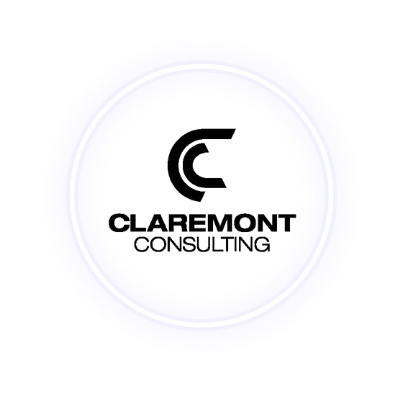How to improve your CV
A CV is your professional representation to potential employers. It is essential to present your CV in the best way possible to showcase your qualifications and experience to stand out from the crowd. A well-optimised CV can help you get shortlisted for job interviews and increase your chances of landing your dream job. In this blog post, we will discuss how to optimise and improve your CV for job applications.

CV Top Tips
1) Tailor your CV to the job you are applying for
One of the most critical aspects of optimising your CV is tailoring it to the job you are applying for. You should read the job description carefully and highlight the skills, qualifications, and experience the employer is looking for. Then, you should ensure that your CV reflects these requirements. This means modifying your CV to fit the job description, using similar keywords and phrases, and demonstrating how you're experience aligns with the job requirements.
2) Highlight your most relevant experience
When writing your CV, it's essential to emphasise your most relevant experience for the job you are applying for. This could include previous job roles, internships, or projects that align with the job description. You should also highlight your achievements in these roles, such as increased sales, improved customer satisfaction, or successful project completion, use numbers and examples when explaining projects worked on.
3) Use a clear and concise format
Your CV should be easy to read and understand. Use a clear and concise format, with bullet points to break up long paragraphs. Use headings and subheadings to organise your content and make it easy for the recruiter to scan quickly. Avoid using fancy fonts or colours that could distract the reader from the content. Your CV should ideally be no longer than 2 pages.
4) Quantify your achievements
When describing your experience, it's essential to quantify your achievements wherever possible. For example, instead of saying that you increased sales, you could say that you increased sales by 20% over a six-month period. This adds credibility to your claims and demonstrates your impact in previous roles.
5) Include relevant keywords
Recruiters and hiring managers often use applicant tracking systems (ATS) to filter through CVs. These systems scan CVs for keywords that match the job description advertised. To ensure your CV is picked up by the ATS, include relevant keywords throughout your CV.
6) Highlight your soft skills
Employers are increasingly looking for candidates who not only have the necessary qualifications and experience but also possess the right soft skills. Soft skills include things like communication, teamwork, problem-solving, and time management. Highlight these skills in your CV, giving examples of how you have used them in previous roles.
7) Check for errors
Finally, it's essential to check your CV for errors before submitting it. Spelling and grammatical errors can make you appear unprofessional and decrease your chances of getting shortlisted. Use spellcheck and ask a friend or family member to proofread your CV to ensure it's error-free.
What to include in your CV
CVs should be tailored to each role you apply for, but to save time, first create a general one, which can be easily adapted for each employer based on the job description.
- Personal Information: This section should include your full name, current address, phone number, email address, and any relevant social media handles or website URLs.
- Professional Summary: A brief statement summarising your career goals, relevant skills, and experience.Try to tailor this to the job description of the role you are applying for.
- Work Experience: A detailed list of all relevant work experience, including the name of the organisation, job title, responsibilities, and dates of employment. You may also want to include accomplishments and achievements in each role. Make sure these are in date order starting with the most recent.
- Education: A list of all relevant educational qualifications including degree(s), course(s), institution(s), and date(s) of completion.
- Skills: A section listing all relevant skills that you possess, including technical and soft skills. This could include software programs, languages, certifications, and other relevant skills. Try to base this section on skills you think will be the most relevant to the role you are applying for.
- Awards and Honours: A list of any relevant awards or recognition that you have received for your work.
- Volunteer Experience: A section detailing any relevant volunteer work, including the name of the organisation, position, responsibilities, and dates of involvement.
- Publications and Presentations: A list of any relevant publications or presentations you have made, including the title, date, and the audience.
- Professional Memberships: A list of any relevant professional organisations you are a member of, including the name of the organisation and your membership status.
- References: A list of professional references, including their name, title, organisation, phone number, and email address. It is also important to ensure that you have received permission from each reference before listing them on your CV.
Download the CV template below to see how to structure your CV:
Optimise your CV for AI Screening
In today's job market, it's common for companies to use artificial intelligence (AI) screening software to manage the influx of resumes they receive. This means that your resume or curriculum vitae (CV) needs to be optimised to pass through this screening process. Here are some tips on how to ensure that your CV is optimised for AI screening software.
1) Use appropriate formatting:
The formatting of your CV can have a significant impact on whether it passes through the AI screening process. It's important to use a simple, clean, and standard format. Avoid using graphics, tables, or images that could confuse the AI. Stick to standard fonts like Times New Roman, Arial, or Calibri, and avoid using unique fonts that could be difficult for the AI to read.
2) Use relevant keywords:
When screening resumes, AI software looks for specific keywords that match the job description. To ensure that your CV is optimised, make sure to include relevant keywords from the job posting throughout your CV. Use the same language and terminology as the job description to show that you have the skills and experience the employer is looking for.
3) Use bullet points and concise language:
When creating your CV, it's important to use bullet points and concise language to make it easy for the AI to scan. Avoid long paragraphs and use short, simple sentences. Use bullet points to highlight your skills and experience, and make sure to use industry-specific terms that the AI will recognise.
4) Use a PDF format:
It's important to save your CV in a PDF format to ensure that the AI screening software can read it correctly. This will ensure that your formatting stays consistent and that your keywords are easily identifiable by the software.





